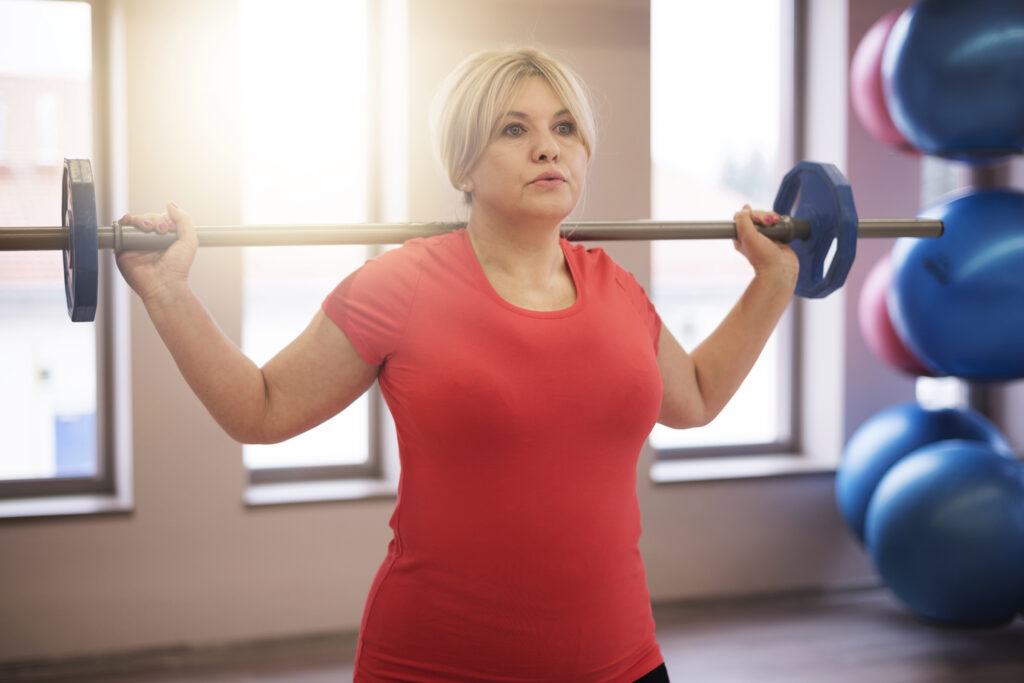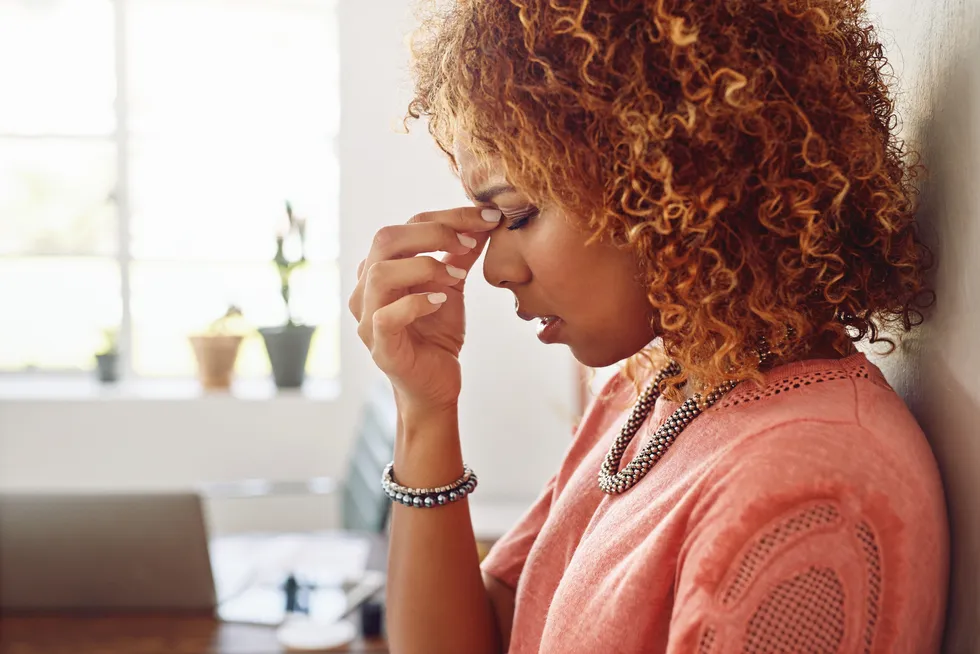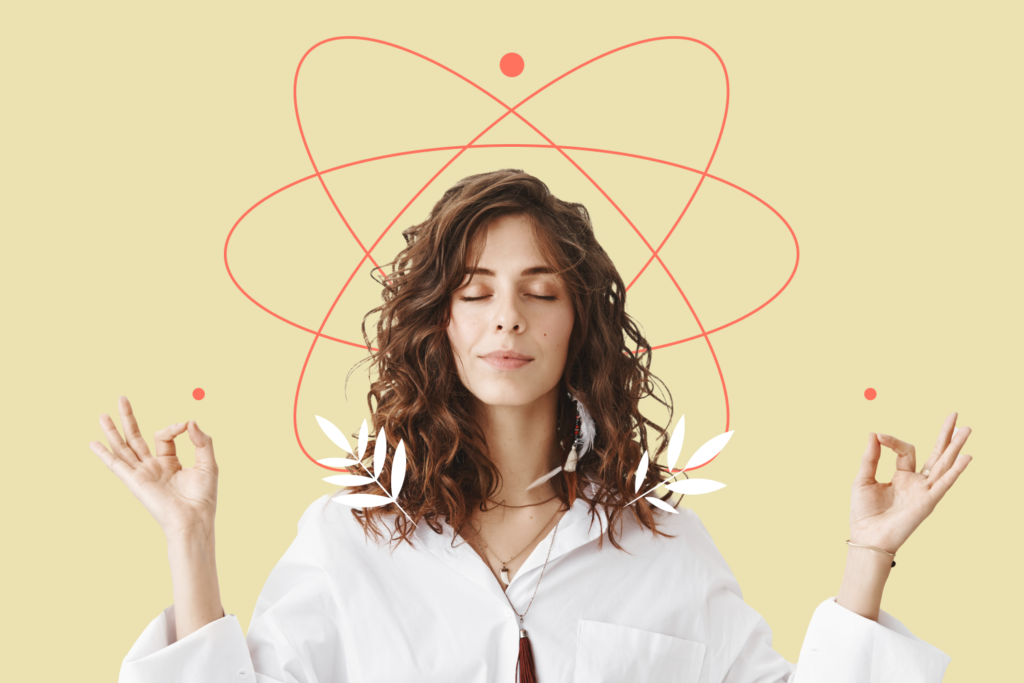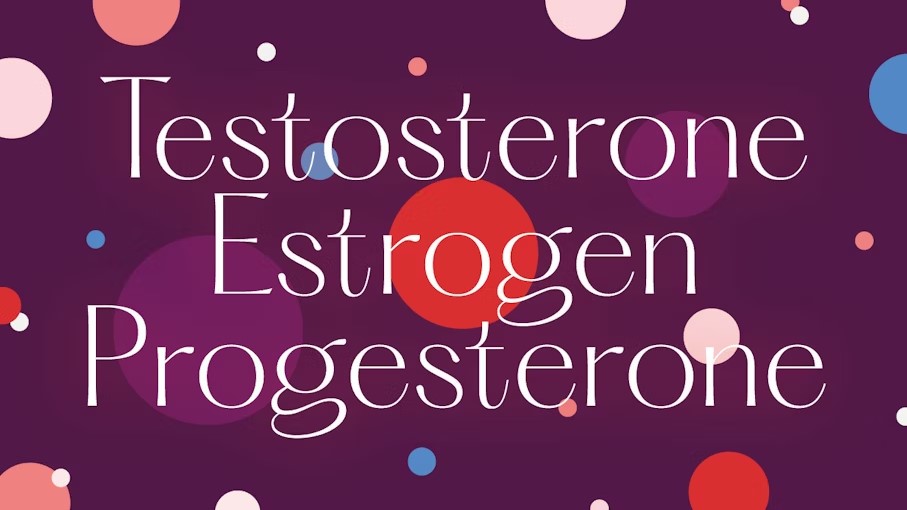Hormones play a crucial role in almost every aspect of human physiology, and nowhere is this more evident than in the realm of sexual reproduction. These biochemical messengers are responsible for regulating various functions that are essential for reproduction, from the development of sexual characteristics to the intricate processes of the menstrual cycle and sperm production. Understanding how hormones influence sexual reproduction is key to grasping the complexities of human biology.
In this article, we will delve into the three primary hormones that are most directly involved in sexual reproduction: estrogen, testosterone, and progesterone. Each of these hormones has unique functions and effects that are vital for reproductive health and fertility.
3 Human Hormones Involved in Sexual Reproduction
1. Estrogen
Role in the Female Reproductive System
Estrogen is often referred to as the primary female sex hormone, although it is present in both sexes. In women, estrogen is produced mainly by the ovaries, and it plays a central role in the development and regulation of the female reproductive system and secondary sexual characteristics.
One of estrogen’s key functions is to regulate the menstrual cycle. At the beginning of the cycle, estrogen levels rise, leading to the thickening of the uterine lining (endometrium) in preparation for a potential pregnancy. This process is crucial for creating a supportive environment for a fertilized egg to implant and develop. Additionally, estrogen triggers the release of luteinizing hormone (LH) during the middle of the menstrual cycle, which is essential for ovulation – the release of an egg from the ovary.
Recommended: What Does an Invalid Pregnancy Test Mean?
Beyond its role in the menstrual cycle, estrogen is also responsible for the development of secondary sexual characteristics in women. These include the growth of breasts, the widening of hips, and the accumulation of body fat in the buttocks, thighs, and hips. These physical changes are important for reproductive health and play a role in sexual attraction and mating.
Role in the Male Reproductive System
While estrogen is often associated with female biology, it is also present in men, albeit in much smaller amounts. In males, estrogen is produced by the adrenal glands and the testes. It contributes to the regulation of the reproductive system, particularly in the maturation of sperm and the maintenance of a healthy libido.
Estrogen helps balance the effects of testosterone in males, ensuring that the body does not produce excessive testosterone, which can lead to health issues. It also plays a role in bone health, brain function, and cardiovascular health in both sexes.
Fluctuations and Effects
The levels of estrogen in the body are not constant; they fluctuate throughout the menstrual cycle. These fluctuations are normal and necessary for the reproductive processes. However, when estrogen levels are imbalanced, it can lead to various health issues.

High levels of estrogen, known as estrogen dominance, can cause symptoms such as weight gain, menstrual irregularities, mood swings, and an increased risk of certain cancers, such as breast cancer. Conversely, low levels of estrogen can lead to symptoms like hot flashes, night sweats, vaginal dryness, and a decreased sex drive, which are commonly experienced during menopause.
Recommended: Hair Fall After Pregnancy Home Remedy
Understanding the role of estrogen and its effects on the body is crucial for maintaining reproductive health. It is important for both men and women to be aware of the signs of estrogen imbalances and seek medical advice if they experience symptoms that could indicate an issue with their hormone levels.
By maintaining a balanced diet, regular exercise, and managing stress, men and women can support healthy estrogen levels. In some cases, hormone replacement therapy (HRT) may be recommended by healthcare providers to address significant hormonal imbalances.
2. Testosterone
Role in the Male Reproductive System
Testosterone is the principal male sex hormone, although it is present in both males and females. In men, testosterone is primarily produced in the testes, with small amounts also produced by the adrenal glands. This hormone is essential for the development of male reproductive tissues and the maintenance of secondary sexual characteristics.
One of testosterone’s most critical functions is the regulation of spermatogenesis, the process by which sperm is produced. During puberty, rising testosterone levels trigger the development of the male reproductive organs, such as the testes and prostate. Additionally, testosterone is responsible for the appearance of secondary sexual characteristics in men, including increased muscle and bone mass, the growth of body and facial hair, and the deepening of the voice.
Recommended: Can Taking Testosterone Make You Sterile?
Testosterone also plays a significant role in influencing libido and sexual behavior. Adequate levels of this hormone are necessary for maintaining a healthy sex drive. Moreover, testosterone supports overall health and well-being, impacting mood, energy levels, and cognitive function.
Role in the Female Reproductive System
Although testosterone is typically associated with male biology, it is also vital for females, but in smaller quantities. In women, testosterone is produced by the ovaries and adrenal glands. It contributes to ovarian function, playing a role in the growth and development of ovarian follicles, which are necessary for the release of eggs during the menstrual cycle.
Testosterone also influences libido in women, enhancing sexual desire and arousal. Additionally, it contributes to the maintenance of muscle mass and bone density, overall energy levels, and mood stability.
Fluctuations and Effects
Testosterone levels fluctuate throughout an individual’s life. In men, levels peak during adolescence and early adulthood, then gradually decline with age. This natural decline can lead to symptoms commonly associated with aging, such as reduced libido, decreased muscle mass, increased body fat, and fatigue.
Recommended: Does Blue Cross Blue Shield Cover Testosterone Treatment?
Low testosterone levels, known as hypogonadism, can occur due to various factors, including aging, medical conditions, or lifestyle choices. Symptoms of low testosterone include reduced sexual drive, erectile dysfunction, depression, and difficulty concentrating. Addressing low testosterone typically involves lifestyle changes, such as improved diet and exercise, and in some cases, testosterone replacement therapy (TRT).

Conversely, excessively high levels of testosterone can also cause health issues. In men, high testosterone levels can lead to aggressive behavior, mood swings, acne, and an increased risk of cardiovascular problems. In women, elevated testosterone levels can cause symptoms such as irregular menstrual cycles, excessive body hair growth, and polycystic ovary syndrome (PCOS).
Recommended: What Causes Erectile Dysfunction in Your 50s?
Maintaining balanced testosterone levels is crucial for overall health and reproductive function. Regular exercise, a healthy diet, sufficient sleep, and stress management are key factors in supporting optimal testosterone levels. For those experiencing significant imbalances, medical intervention may be necessary.
3. Progesterone
Role in the Female Reproductive System
Progesterone is a crucial hormone in the female reproductive system, often referred to as the “pregnancy hormone” due to its essential role in maintaining pregnancy. It is primarily produced by the corpus luteum in the ovaries after ovulation and later by the placenta during pregnancy.
One of progesterone’s primary functions is to regulate the menstrual cycle. After ovulation, progesterone levels rise to prepare the endometrium (the lining of the uterus) for a potential pregnancy. It thickens the endometrium, making it suitable for the implantation of a fertilized egg. If pregnancy does not occur, progesterone levels drop, leading to the shedding of the uterine lining during menstruation.
Recommended: Can You Squirt After Menopause?
During pregnancy, progesterone’s role becomes even more critical. It helps maintain the uterine lining, prevents uterine contractions that could lead to miscarriage, and supports the early stages of fetal development. Progesterone also helps prepare the breasts for milk production, ensuring they are ready for breastfeeding after childbirth.
Role in the Male Reproductive System
Although progesterone is often associated with female reproductive health, it also plays roles in the male body. In men, progesterone is produced in smaller amounts by the adrenal glands and testes. It contributes to the production of testosterone and helps regulate the balance of other hormones.
Progesterone in men is also involved in maintaining sperm health and function. It aids in the maturation of sperm and supports their motility, which is crucial for fertilization. Additionally, progesterone has a role in regulating the nervous system and promoting a sense of calm, as it is a precursor to several neurosteroids that influence brain function and mood.
Fluctuations and Effects
Progesterone levels naturally fluctuate throughout the menstrual cycle and during different life stages. In the first half of the menstrual cycle (the follicular phase), progesterone levels are relatively low. After ovulation (the luteal phase), they rise significantly to prepare the body for a potential pregnancy. If pregnancy occurs, progesterone levels continue to rise; if not, they fall, triggering menstruation.

Low progesterone levels can lead to various health issues, particularly related to reproductive health. In women, insufficient progesterone can cause irregular menstrual cycles, heavy or painful periods, and difficulties in maintaining pregnancy, leading to recurrent miscarriages. Symptoms of low progesterone also include mood swings, anxiety, sleep disturbances, and decreased libido.
Recommended: Does Sex Affect Periods?
High progesterone levels are less common but can occur, particularly with certain medical conditions or treatments. Elevated progesterone can lead to symptoms such as bloating, fatigue, dizziness, and breast tenderness. In some cases, high progesterone levels may indicate a hormonal imbalance or endocrine disorder.
Maintaining healthy progesterone levels is crucial for reproductive health and overall well-being. Lifestyle factors, such as a balanced diet, regular exercise, stress management, and adequate sleep, can support optimal progesterone levels. For individuals experiencing significant imbalances, medical treatments such as hormone therapy may be necessary.
Hormonal Interactions and Balance
Progesterone does not work in isolation; it interacts with other hormones like estrogen and testosterone to regulate reproductive processes. The balance between estrogen and progesterone is particularly important. Estrogen stimulates the growth of the uterine lining, while progesterone stabilizes and prepares it for potential implantation. An imbalance between these hormones can lead to various reproductive health issues, such as endometriosis, polycystic ovary syndrome (PCOS), and infertility.
Interaction Between the 3 Hormones
Synergistic Effects
The hormones estrogen, testosterone, and progesterone do not operate in isolation; they interact in a complex and synergistic manner to regulate the reproductive system. Their interactions are crucial for the proper functioning of reproductive processes, ensuring that each step in the cycle of reproduction is coordinated and effective.
In women, the interplay between estrogen and progesterone is especially critical. During the menstrual cycle, estrogen levels rise in the first half (the follicular phase) to promote the growth and thickening of the uterine lining. This prepares the uterus for potential implantation of a fertilized egg. Mid-cycle, a surge in luteinizing hormone (LH) triggers ovulation, releasing an egg from the ovary. After ovulation, progesterone levels rise during the luteal phase to stabilize and further prepare the uterine lining for implantation. If fertilization and implantation do not occur, progesterone and estrogen levels fall, leading to menstruation.
Recommended: Top 6 Signs Of Poor Egg Quality You Should Know
Testosterone also plays a role in this hormonal interplay. While predominantly associated with male characteristics, in women, testosterone contributes to the production of estrogen and supports ovarian function. Testosterone levels affect libido and sexual function in both men and women, indicating its broad influence across genders.
In men, the interactions between testosterone and estrogen are also important, albeit less pronounced than in women. Testosterone is the primary hormone responsible for male secondary sexual characteristics and spermatogenesis (sperm production). However, small amounts of estrogen are necessary for sperm maturation and overall reproductive health. The balance between these hormones ensures effective reproductive function and maintains libido.
Hormonal Balance
Maintaining a balance among estrogen, testosterone, and progesterone is crucial for reproductive health. This balance ensures that the various processes involved in reproduction occur smoothly and without disruption. Hormonal imbalances can lead to a range of health issues that affect fertility, sexual function, and overall well-being.
In women, an imbalance between estrogen and progesterone can lead to conditions such as estrogen dominance, where too much estrogen relative to progesterone can cause symptoms like heavy menstrual bleeding, mood swings, and an increased risk of certain cancers. On the other hand, low estrogen levels can result in symptoms such as hot flashes, vaginal dryness, and osteoporosis, particularly during menopause. Low progesterone can lead to menstrual irregularities, difficulty maintaining pregnancy, and symptoms like anxiety and sleep disturbances.
Recommended: Top 5 Foods To Avoid While Taking Letrozole For Fertility
In men, low testosterone levels can cause reduced libido, erectile dysfunction, fatigue, and loss of muscle mass. Elevated estrogen levels in men, although less common, can lead to symptoms such as gynecomastia (enlarged breast tissue), reduced sperm count, and decreased libido.
Consequences of Hormonal Imbalances
Hormonal imbalances can have far-reaching effects on reproductive health. In women, conditions like polycystic ovary syndrome (PCOS) and endometriosis are often linked to hormonal disruptions. PCOS, for example, is associated with elevated levels of androgens (including testosterone) and insulin, leading to irregular menstrual cycles, infertility, and other metabolic issues. Endometriosis involves the growth of uterine tissue outside the uterus, often exacerbated by imbalances between estrogen and progesterone.

In men, low testosterone levels, known as hypogonadism, can impair spermatogenesis and reduce fertility. High levels of testosterone, while less common, can result from anabolic steroid use and lead to aggressive behavior, mood swings, and cardiovascular issues.
Maintaining Hormonal Balance
To maintain hormonal balance and support reproductive health, several strategies can be employed:
- Healthy Diet: Consuming a balanced diet rich in fruits, vegetables, whole grains, lean proteins, and healthy fats can support hormonal health. Specific nutrients like zinc, magnesium, and omega-3 fatty acids are particularly beneficial.
- Regular Exercise: Physical activity helps regulate hormone levels, improve mood, and support overall health. Both aerobic exercises and strength training are effective.
- Stress Management: Chronic stress can disrupt hormone production and balance. Techniques such as mindfulness, meditation, yoga, and adequate sleep are important for managing stress.
- Medical Interventions: For significant hormonal imbalances, medical treatments such as hormone replacement therapy (HRT), medications, or surgery may be necessary. Consulting with healthcare providers is essential for appropriate diagnosis and treatment.
Recommended: How Soon After Tubal Reversal Can I Try To Conceive?
In summary, the interaction between estrogen, testosterone, and progesterone is a delicate and complex process that is vital for reproductive health. Understanding these interactions and the importance of maintaining hormonal balance can help individuals manage their reproductive health effectively and address any issues that arise from hormonal imbalances.
Hormonal Changes Across the Lifespan
1. Puberty
Puberty marks the beginning of significant hormonal changes that prepare the body for sexual reproduction. During this period, the hypothalamus in the brain releases gonadotropin-releasing hormone (GnRH), which signals the pituitary gland to produce luteinizing hormone (LH) and follicle-stimulating hormone (FSH). These hormones stimulate the gonads (ovaries in girls and testes in boys) to produce estrogen and testosterone, respectively.

In girls, increased estrogen levels lead to the development of secondary sexual characteristics such as breast development, widening of the hips, and the onset of the menstrual cycle. The first menstrual period, known as menarche, typically occurs between the ages of 9 and 16 and signifies the beginning of reproductive capability.
In boys, rising testosterone levels cause the growth of facial and body hair, deepening of the voice, and increased muscle mass. The testes enlarge, and spermatogenesis begins, marking the onset of fertility.
Recommended: 10 Best Vitamins For Hormonal Acne
These hormonal changes are accompanied by rapid physical growth and emotional changes as adolescents adjust to their developing bodies and sexual identities.
2. Adulthood
During adulthood, reproductive hormones stabilize at levels that support fertility and sexual health. In women, the menstrual cycle becomes regular, with coordinated fluctuations in estrogen and progesterone regulating ovulation and menstruation. The reproductive years are characterized by the potential for conception and pregnancy, with hormone levels supporting these processes.
In men, testosterone levels remain relatively stable throughout early and mid-adulthood, maintaining libido, sperm production, and secondary sexual characteristics. However, lifestyle factors such as diet, exercise, stress, and overall health can influence hormone levels and reproductive health.
Recommended: Can a Woman Have an Orgasm After Menopause?
Maintaining a healthy lifestyle is crucial during adulthood to support optimal hormonal balance. Regular physical activity, a balanced diet, adequate sleep, and stress management contribute to the proper functioning of the endocrine system and reproductive health.
3. Menopause and Andropause
As people age, significant hormonal changes occur that impact reproductive function. In women, menopause marks the end of the reproductive years. Typically occurring between the ages of 45 and 55, menopause is defined by the cessation of menstrual periods for 12 consecutive months. The transition to menopause, known as perimenopause, can span several years and is characterized by fluctuating hormone levels.

During perimenopause, estrogen and progesterone levels decline, leading to symptoms such as hot flashes, night sweats, mood swings, and vaginal dryness. The decline in estrogen also increases the risk of osteoporosis and cardiovascular disease. Hormone replacement therapy (HRT) is often considered to alleviate severe symptoms and reduce health risks associated with low estrogen levels.
In men, the equivalent process is often referred to as andropause or late-onset hypogonadism. Unlike the abrupt hormonal changes in women, the decline in testosterone levels in men is more gradual, typically starting around the age of 40. Symptoms of andropause may include reduced libido, erectile dysfunction, fatigue, depression, and loss of muscle mass.
Recommended: Does Ovulation Make You Emotional?
Managing these changes involves maintaining a healthy lifestyle, including regular exercise, a nutritious diet, and stress reduction techniques. In some cases, testosterone replacement therapy (TRT) may be recommended to address significant symptoms of low testosterone.
Conclusion
Estrogen, testosterone, and progesterone are pivotal in regulating human sexual reproduction. Their balanced interplay ensures proper reproductive function and overall health. Understanding these hormones’ roles and interactions helps us appreciate the complexities of our reproductive systems.
By maintaining a healthy lifestyle and seeking medical advice when necessary, we can manage hormonal imbalances and support reproductive health. Recognizing the significance of these hormones across different life stages empowers us to take proactive steps for better well-being and a healthier future.

You always provide a fresh perspective on things. Thanks for this post!